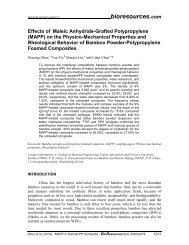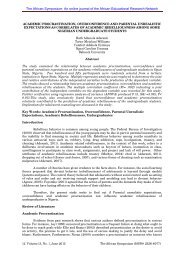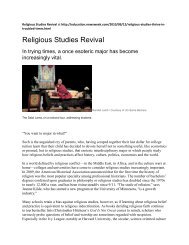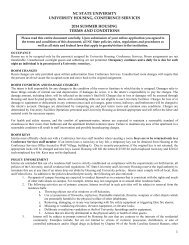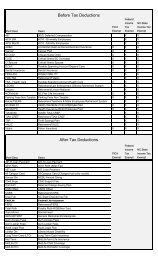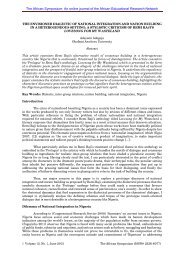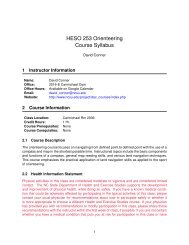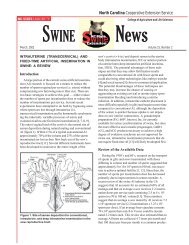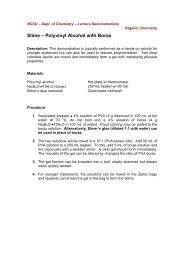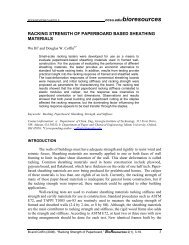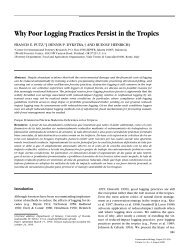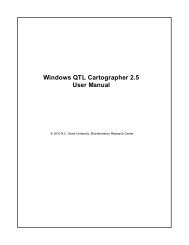Residential Rehabilitation, Remodeling and Universal Design
Residential Rehabilitation, Remodeling and Universal Design
Residential Rehabilitation, Remodeling and Universal Design
You also want an ePaper? Increase the reach of your titles
YUMPU automatically turns print PDFs into web optimized ePapers that Google loves.
Introduction<br />
In recent years it has become more widely recognized that residential design<br />
must address a dynamic range of people <strong>and</strong> abilities. Housing in this century<br />
must be adaptable to accommodate the differing needs <strong>and</strong> requirements of the<br />
users. Individual characteristics such as strength or agility should not prevent<br />
a person from safely using <strong>and</strong> enjoying all features in their home. This design<br />
approach, known as <strong>Universal</strong> <strong>Design</strong>, strives to make day-to-day living <strong>and</strong><br />
home tasks possible <strong>and</strong> safer for everyone, allowing a person to remain independent<br />
for as long as possible.<br />
These goals are as significant for affordable housing as they are for market<br />
rate housing. They may, in fact, be even more critical for households lacking the<br />
financial <strong>and</strong> community resources to effectively deal with dramatic life changes<br />
from sickness <strong>and</strong> injury, effects of aging, or those supporting other family<br />
members affected by these issues. For many households, finding decent, affordable<br />
housing that also supports their activities is extremely difficult. A family<br />
living in a typical home often faces expensive modifications they can not afford<br />
such as adding ramps, widening doorways, or creating usable bathrooms.<br />
Little housing today, whether single- or multifamily, adequately responds to<br />
the diverse <strong>and</strong> ever changing needs of the population. The Fair Housing Act<br />
<strong>and</strong> the North Carolina Accessibility Code are altering the multifamily housing<br />
industry, but the requirements of these accessibility provisions only offer a<br />
limited degree of usability to many people. <strong>Universal</strong> <strong>Design</strong> incorporates many<br />
accessibility code requirements <strong>and</strong> stresses innovative solutions to facilitate<br />
daily living <strong>and</strong> independence, especially for people who have, are, or will be<br />
experiencing changes in their mobility <strong>and</strong>/or sight <strong>and</strong> hearing.<br />
In the coming years, several state agencies are rehabilitating targeted older<br />
homes owned by people of low income. Significant rehabilitation may occur to<br />
address structural, energy, weatherization, <strong>and</strong> plumbing concerns. In some<br />
cases individual homes are already identified for upgrade based on the occupant’s<br />
needs, i.e., older adults <strong>and</strong> people with disabilities. When significant<br />
construction is underway, what better time to address key issues of usability?<br />
Entrances <strong>and</strong> bathrooms are two significant areas where mobility is essential.<br />
It is critical to ensure that people are able to get in <strong>and</strong> out of their home.<br />
Usable bathrooms, on the other h<strong>and</strong>, are essential for surviving in one’s home<br />
with a temporary or a long-term disabling condition. Safety <strong>and</strong> independence<br />
<strong>Residential</strong> <strong>Rehabilitation</strong>, <strong>Remodeling</strong> <strong>and</strong> <strong>Universal</strong> <strong>Design</strong><br />
When significant construction<br />
is underway,<br />
what better time to<br />
address key issues of<br />
usability?



